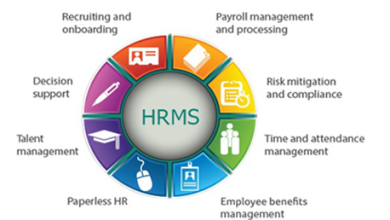How Beneficial is Automated Warehouse Picking System?

Developing a picking technique that properly matches the needs of your warehouse can be a difficult undertaking, especially if you’re dealing with issues like different inventory, a rotating door of pickers, a plethora of SKUs, and lightning-fast picking deadlines.
Other warehouses, understandably, share your concern, but the most forward-thinking have made investments in their future by adding automation into the picking process.
Automated warehouse picking is a team effort, and it’s not only for large corporations with seemingly limitless funds. The best solutions may be customized to add value to your current picking processes without requiring months of downtime or a years-long wait for a return on investment.
What is Automated Warehouse Picking System?
An automated warehouse picking system is the use of robotic/semi-robotic technologies to aid human pickers.
Though there are many possibilities in the world of automated warehouse picking, the most effective automation systems work with your team members and can be rapidly and seamlessly integrated into existing warehouse procedures.
Benefits of Automated Warehouse Picking System
In addition to reducing walking time and shortening picking routes, automated warehouse picking can also interface with your existing warehouse management system and assist in correct picking and packing. E-commerce, retail, manufacturing, food and beverage, transportation, medical equipment, and other businesses can all benefit from it.
Some of the benefits of an automated warehouse picking system are
-
Super-Fast Productivity
The most prominent benefit of an automated warehouse picking system is that it reduces pick times. Most warehouses report a 2-3x increase in picking speeds.
This is because collaborative robots can move around the warehouse floor faster than humans. And, more crucially, they can work nonstop without taking breaks or changing shifts.
-
Easy-to-Learn
Many managers are reluctant to the learning curve of a new system and are hesitant to change their current practices. An automatic warehouse picking system, on the other hand, is simple to learn, allowing you to quickly integrate it into your operation.
The system may be learn in minutes, which means you won’t have to spent a lot of time learning it before you can start using your new technological tool.
-
Safety
An automated warehouse picking system has several advantages, one of which is that it significantly improves your facility’s safety levels. When you operate safely, your employees are less likely to incur an on-the-job injury, which can result in unexpected legal bills and a loss of productivity.
Automated robots comply with OSHA regulations and rely on sensor technology, which means they have high stop accuracy and can avoid laborers and equipment quickly. Furthermore, because robots may move without an operator, they allow for a hands-free picking environment, which reduces injuries significantly.
-
Scalability
Traditional techniques to meet high seasonal demand required sizing an automated solution around a few months of demand. However, for many businesses, filling your building with heavy equipment that won’t be used for the majority of the year isn’t the most efficient use of capital.
Collaborative robots, on the other hand, can be add as need, providing increase capacity quickly. That means you can rent more capacity during peak seasons or even move robots to different facilities if your network of distribution and fulfillment centers needs to change.
-
Saves Warehouse Space
Picking systems from the past are bulky, taking up a large portion of your facility’s floor space, and they are difficult to shift to a different place.
Because an automated warehouse picking system allows for more compact storage, switching to technology-driven picking reduces wasted space from shelving and maximizes vertical space. The method achieves this by maximizing organization through the use of high-density bins, divides, totes, and drawers.
You can accommodate more inventory, expand your operations, or even sublet your warehouse for additional revenue with the increased floor space.
-
Fast Implementation
No one wants to spend money on a new system and then have to wait a year to use it. One of the best things about an automated warehouse picking system is that you don’t have to invest in new equipment to get started.
Most operations can begin employing their latest equipment 2-6 weeks after it is install. When compared to other automation solutions, an automated warehouse picking system has a significantly shorter waiting period, which means that integrating it won’t have as large of an impact on your productivity.
-
Adapt into Your Existing WMS
This automated will adapt to your physical as well as technological infrastructure.
Because an automated warehouse picking system does not require any IT reboots or overhauls, you may simply integrate it with your existing warehouse management system.
The advantages of this are that you won’t have to learn any new software and can start using your system right away.
Conclusion
Manufacturers and distributors are under pressure in today’s fast-pace industry to successfully fulfill orders on time. In most situations, this results in orders being picks and stag before shipment, which has an impact on the entire supply chain process.
Using an automated storage and retrieval system (AS/RS) in conjunction with an automated warehouse picking system can significantly improve order fulfillment and efficiency.




